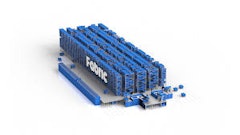
When the pandemic hit and shopping in person was no longer an option, companies were forced to step up their game to keep their customers. Home delivery and curbside pickup became the new norm overnight. While by and large we are once again free to visit our favorite shops, consumers now have a multitude of shopping channels to choose from and they want the ability to switch seamlessly between them.
This is where omnichannel strategies come into play as they function to facilitate increasingly nimble shopping experiences. However, there’s a lot that goes into launching an omnichannel strategy as this approach has a massive impact on the order fulfillment process.
What is the difference between multichannel and omnichannel?
Because the terms multichannel and omnichannel often get used interchangeably, it’s easy to assume that they’re one and the same. There are overlaps between the two, but there are also distinct differences.
Multichannel connects the consumer and the product in limited ways. While there is more than one channel from which consumers can purchase the product, a desire for simplified distribution limits the number of channels in which product will be sold and the ways in which it can be returned.
Omnichannel puts the consumer at the center of the purchasing experience. Product is made available to consumers via as many channels as possible and returns are flexible at the expense of a more complex distribution model.
Multichannel vs. omnichannel order fulfillment
Multichannel order fulfillment is frequently siloed by sales channel, with a separate inventory for each. By its nature, the paths to getting products to consumers are more direct and therefore less complicated.
For example, a retailer might send inventory from its warehouse to its physical store locations for in-store customers to purchase. In the event of a return, customers would do so at the store. If this retailer also sells products via their website, they might use a third-party logistics (3PL) provider to process the order and/or return of online orders. In this case, fulfillment and selling activity remains segregated.
Omnichannel order fulfillment unifies sales channels, often with one inventory and one fulfillment process for all channels. In addition, omnichannel fulfillment integrates retail store locations through in-store pickup and returns for online orders.
An omnichannel strategy offers customers shopping flexibility and convenience as it enables:
· Buy in-store, home delivery
· Store-to-store fulfillment and delivery
· Click and collect (or buy online, pick up in-store)
· Buy online, return in-store
· And any mixture of the above
Choosing the right WMS for omnichannel success
Today’s customers increasingly crave the convenience of an omnichannel shopping experience, and technology solutions are key to delivering them. The right warehouse management system (WMS) can help turn omnichannel challenges into opportunities by delivering real-time inventory visibility, labor management, equipment productivity and performance analytics that drive faster, more accurate order fulfillment and improved supply chain efficiency. In the simplest of terms, you want to seek out a WMS that automates and safeguards that all channel requirements are being met.
In the omnichannel world, there are several key “forks in the road” to ensure your WMS can manage seamlessly and without human intervention.
Fork #1 Allocation
As orders drop into your warehouse, you need a system that understands which channel they are coming from and how to best route them for picking, packing and shipping. For example, in most cases, inventory is being allocated on a first in/first out (FIFO) basis. But, if you are shipping anything with an expiration date that includes a longer travel time, you need a WMS that is smart enough to allocate products against that need.
Fork #2 Value-added services
A growing number of retailers and manufacturers are choosing to grow their online sales by making their products available for purchase on retail partner sites. If fulfilling these orders from the warehouse, pick, pack and ship them according to your retail partner’s requirements, not yours.
This means the orders must look as if they have come directly from your partner. This usually involves using a specific box or a specific tape, including a branded packing list, wrapping the item in a certain way, etc. In this case, you need a WMS capable of automating how orders sold via retail partners should be picked and where they should be routed within the warehouse for proper packing.
Fork #3 Labeling
Whether fulfilling online orders for goods sold on your own website or a retail partner’s site, shipping and compliance label requirements, likely variable by channel, will need to be met. And, you need a WMS that can auto generate these labels.
Fork #4 Electronic notifications
When fulfilling orders for a retail partner, notify the seller when the order is shipped and when it will be delivered via an electronic notice. Whether this be via EDI or API, your WMS must accommodate the requirement. In the case of EDI, retailers commonly depart from standards according to their own needs, and you need a WMS smart and flexible enough to stay on top of the requirements.
Fork #5 Third-party fulfillment
In the omnichannel world, programs that allow sellers to ship their merchandise to partner fulfillment centers where items will be stored in warehouses until they are sold, are common. In this case, a WMS that can track and manage shipping requirements including label specifications, pallet configurations and other details is critical. Chargebacks for failing to adhere to standards are the norm. A WMS that reduces exposure points is key to creating a profitable relationship.
Building an omnichannel ready supply chain
In the end, the evolution of the omnichannel supply chain is about the consumer and what makes them happy. According to research by McKinsey, service is the primary factor for omnichannel distributors to differentiate themselves and please their customers.
Figuring out how to achieve customer satisfaction profitably is a challenge. Omnichannel fulfillment becomes more complex every day. Success lies in finding innovative and cost-effective ways to distribute high-volume consumer and retail goods, managing the overflowing product pipeline and integrating people, processes, systems and data. The implementation of the right WMS in combination with improved processes are needed to support the growing demand.
















